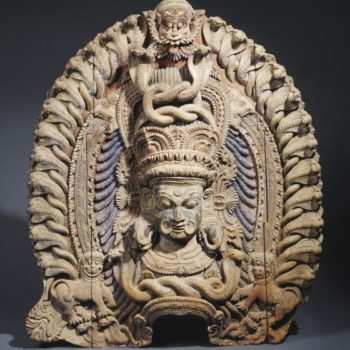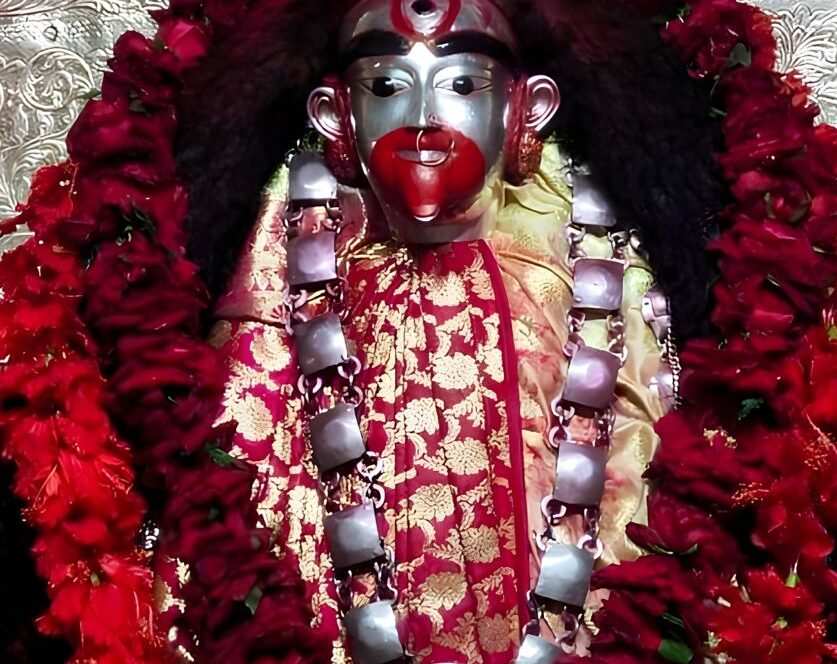Ekajaṭī or Ekajaṭā, (Sanskrit: “One Plait Woman”; one who has one knot of hair), also known as Māhacīnatārā originated in Tibet and later found her way into India during the time of Nalanda in 7th century through the Baudha Tantric master Nagarjuna. Along with Palden Lhamo, Ekajaṭā is considered as the most fierce form of Shakti and also the protector of the most secret mantra, the inner Tantra-s and the non-dual state of Dzogchen. Among the various colors associated with the patheon of Tara, she is also known as Blue Tara. This is the very same Goddess who becomes Mahavidya Tara in the Hindu Shakta pantheon. Her upasana is done in Tantric manner using panchamakara and other heterodox rituals. The single Jata on Her head is representative of an exceptional Yogic focus on the state of Absolute and un-compromising non-dual nature of Reality. She stands inside a flaming mandala which is triangular in shape and surrounded by a retinue of the most ferocious Shaktis and servers. Those who are lazy in her practice, She smites them hard to wake up the untimely slumberer, for those who approach Her with their egos She punctures them by orchestrating terrible events until they realize the dharmakaya or body of Dharma which is experientially similar to the condition of non-duality. In Her right hand, She is sometimes shown holding a blood-dripping fresh heart in her palms, ripped out from those who break their vows of dharma. She is terrifying but She is also one of the fastest deities to confer true adhyatma onto a steadfast seeker. Her mantras are guarded and almost never revealed to those who are not serious about this path. In Her Hindu iconography, She is shown holding a blue-lotus and scissors representing spiritual knowledge and Her expertise in cutting off intricate knots of karma. During the reign of the Pala kings in Eastern India, Tara worship was the most popular of Shakta practices. The Pala’s even had the image of Tara on their royal flag.
The Amavasya on the month of Bhadra is specially auspicious for upasana of Tara in the Hindu system of sadhana.


